I know a place
inspired by a library book my 5-year old brought home: I know a place by Karen Ackerman
I know a place where vanilla and cloves meet And embrace with warm, heady scents Where citrus and nuts mingle in a pungent dance Where ginger and cardamom, black pepper and coriander come alive I know a place where bumpy, gnarly shells hide pyramids of spice Where seeds, a warm red-brown colour cuddle together And give no inkling of the power that doth lie within A place that’s as bright, and sunny as can be I know a place where seeds can be crunched And where the legacy they leave can battle colds and flus A place where warm pleasant heat is left in the ‘chewed’ paths Where floral notes rise and rise till they hit a crescendo. Bam. Like an orchestra. I know a place where sweet can meet salty Hot can meet peppery, where a mouthful is A harmonious blend of all my favourite spices, at home on my rack I know a place. And it’s called Grains of paradise I know a place where five spices meet Morocco Where stews and tagines, fritters and more, star in a grains of paradise show so fragrant I know a place and it is called Ras el Hanout * Ras El Hanout’s literal translation from Arabic is “head of the shop,” implying that it’s “the best (or top) of the shop.” I know a place where still waters run deep Where a liqueur takes on heat the heat of pyramid grains Heat that mellows the Scandinavian cold to the core I know a place, and its called Aquavit I know a place where freshly roasted peanuts Keep pleasant company till they are transformed Into a nut butter so smooth and spicy They are perfect for Nigerian garden eggs I know a place and it is called Okwu Oji, Grains of Paradise peanut butter by Ozoz—–00000—–

We call it alligator pepper. You might know them as grains of paradise.
Grains of Paradise Facts
Nigerian name: Alligator Pepper, Ose Oji (Ibo)
Genus/Latin name: Aframomum Meleguata/a species of the cardamom and ginger family, Zingiberaceae
English name: Guinea Pepper
Origin: Apparently, the name Grains of Paradise began as a ploy to sell the spice at higher prices. Merchants claimed the grains only grew in the land of Eden, and were collected as they floated down the rivers out of God’s paradise.
Liberia was known for many years as the Grain Coast, due to the abundance of grains of paradise. Popular in Medieval Europe up till the 18th century when George III passed a parliamentary act forbidding its use in a number of alcoholic drinks from malt liquor to gin and even in mixed brews and cordials.
Provenance: West & North Africa
Uses/products: As a spice and black pepper substitute; in Nigerian peanut butter; in alcoholic brews from Ypocras/Hippocras, to Aquavit/Akvavit and ales. Cough rememdies (ground and stirred into honey, taken like cough syrup)
Taste profile: Nutty and earthy, citrusy and fragrant with a slight woody-floral flavour, think hints of cardamom and ginger
Substitute: Black pepper
For more on the etymology and scientific names of Grains of Paradise, read more on Fran’s Betumi Blog.
In my kitchen are grains of paradise, a spice that is as common as salt in Nigeria, where it is known as alligator pepper. In Nigeria, you’ll find whole pods of grains of paradise to buy, hawked on trays by men from the north. Quite different from how it is sold ‘abroad’!
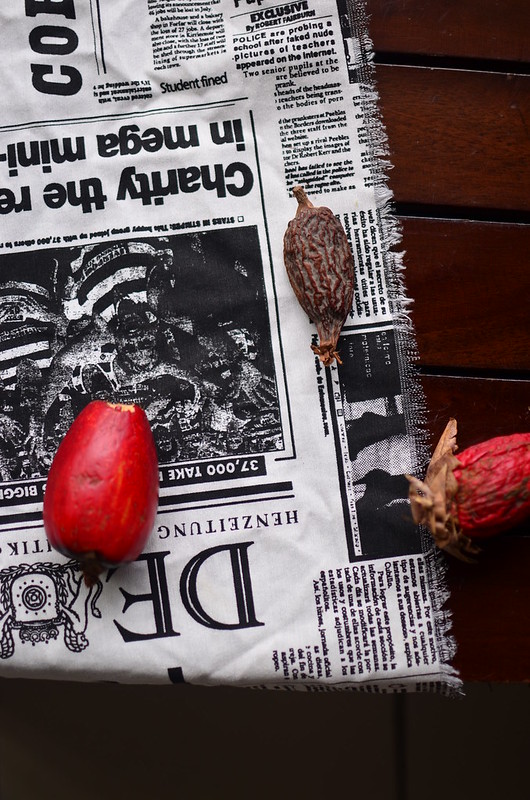
I’m sure most people who are familiar with only the seeds would be surprised by the vehicle it transports itself in – a pod, which could be mistaken for a lengthened fig but with skin bumpy like the Alligator’s hide.
I’ve seen the whole gamut – fresh pod to dried and it is hard to imagine that both versions are even vaguely related, not to mention that they are the very same thing. For the fresh pods start out plump, with firm, smooth red skin. The pods stays fresh for weeks if they are wrapped up in (clear) plastic. The fresh pods smells like sweet green apples – fresh, crisp, clean but tastes like the Cashew fruit – tart. Since I’m not sure the pod should be eaten I don’t venture too far.

Open up the pods and you’ll find three segments of seeds, quite like citrus segments, bound together and swaddled in ‘fresh-cotton’ like fibre. This ‘cotton’ covering has the lightness of orange pith, you know the white part that covers the pulp. In all the pods I’ve seen – fresh and dry, I’ve only ever seen 3 segments in a pod.
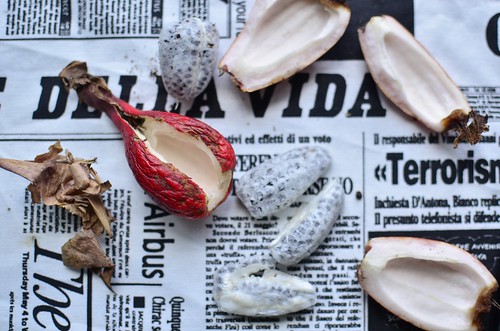
A week of exposure and the fruit loses its firmness, the skin begins to shrivel……giving an indication of what the final, dried pods will look like. El gator. Spanish for Alligator.
The dried pods are ¼ the size of the fresh, and the fresh seeds are darker and larger than the dried grains – they shrink and lose their moisture as they age and the pods dry out.
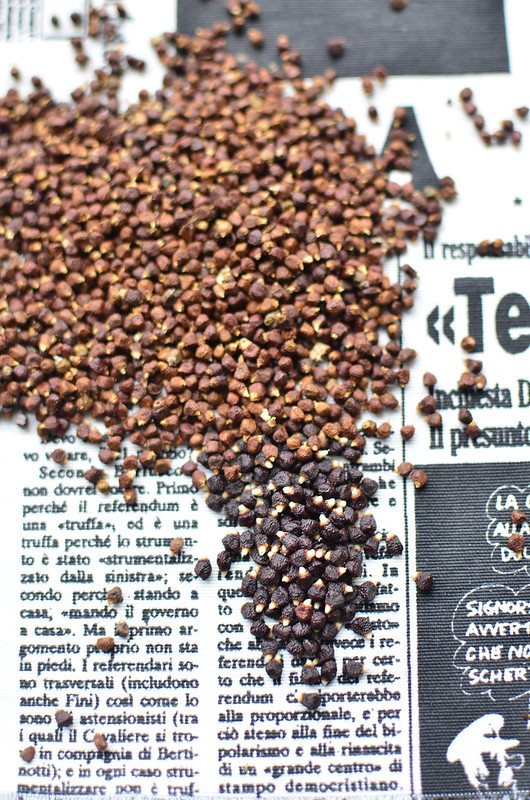
As we speak, I have an alligator pepper plant growing in my backyard! Our nanny was so kind to get and plant it for me. In a few months (or years) I may very well be harvesting my very own grains of paradise.
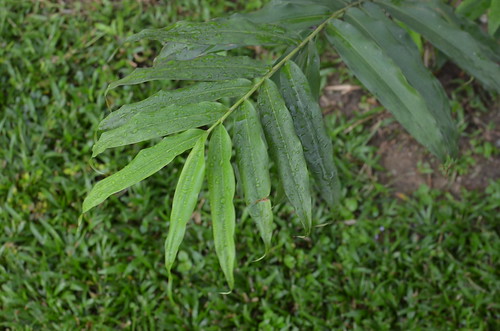
The first indication I get of alligator pepper as a global ingredient is in 2010 while reading Amanda Hesser’s memoirs ‘Cooking for Mr Latte’.
She writes: I put a few between my teeth and crunched. They cracked like coriander, releasing a billowing aroma, and then a slowly intensifying heat, like pepper. The taste changed by the second. The heat lingered. But the spice was pleasantly tempered, ripe with flavors reminiscent of jasmine, hazelnut, butter and citrus, and with the kind of oiliness you get from nuts. They were entirely different from black peppercorns. And in my mind, incomparably better.
In Nigeria, grains of paradise, ose oji is both a sore throat/flu remedy and a cooking ingredient, most famous in a peanut butter recipe from the East called ‘Okwu-Oji’.
The resulting peanut butter is nutty (of course) and spicy with citrusy, herbal and peppery notes that take this PB to the highest plane. It is almost always served as a dip with ‘garden eggs’, out-of-hand (no-cooking required) cousins to the Aubergine, extremely popular at weddings and other celebrations.
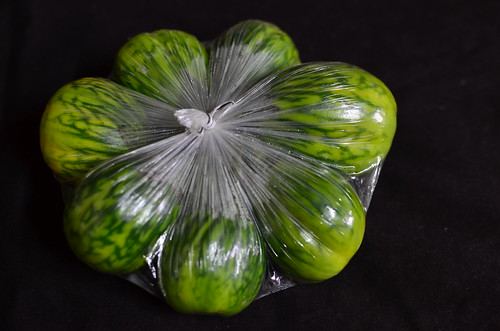
To get to the seeds, you must first break open the pod where you’ll find papery skin cloaking small, brown pyramid-shaped seeds. Once you take off the skin, the seeds are yours. All yours. If you (could) sneak a taste, the aroma to hit you may leave you confused. That’s peppery, and nutty, and flowery. Is it jasmine or lavender? Where am I? A field in Provence or a valley in Cuenca, Eastern Spain. With every chew, your mouth will fill with an intense woody, almost forest-like aroma and your throat and stomach will be filled with warmth that is in no way harsh, in no way unpleasant. Thus, a perfect ingredient for brewing beer and making sausages. For peanut butter, and in steak au poivre.
The dried seeds are a gorgeous reddish-brown, and resemble oddly shaped pyramids. Crack them open and you’ll be surprised to see the white interior. Grind them and the speckled appearance will demonstrate some of the transforming character of these grains. Of paradise.
I like to use them in a peanut butter condiment, which uses Calabash nutmeg (also used in pepper soup) and tiny dried red chilies, as well as grains of paradise and freshly roasted peanuts.
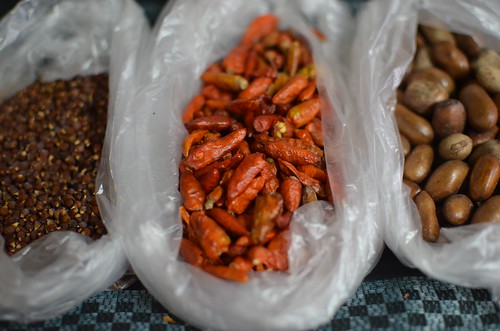
The peanut butter is especially made for African garden eggs, (Solanum Melongena) popular in the East of Nigeria, amongst the I(g)bo tribe where they are called Anara. In the west, they are called Ìgbá. They can be cooked as well in sauces and stews, pretty much like aubergines.
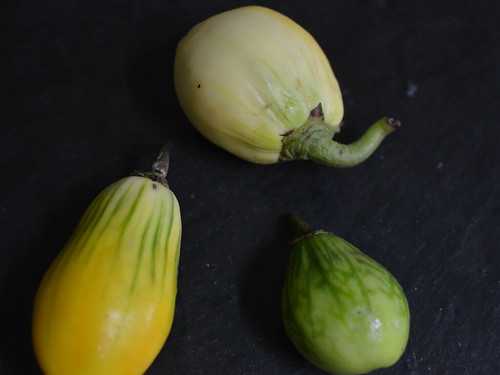
Garden eggs are somewhat crisp and slightly bitter to taste – the fruit is a combination of seeds and spongy flesh.
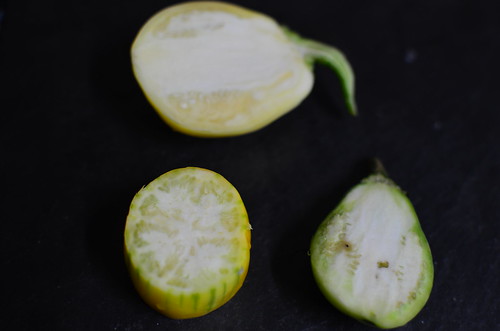
Traditionally, the dip is a smooth, spicy paste ground by hand in a food mill and spiced to taste.
My version was delicious, though nowhere near as smooth as the commercial ones. A second batch made with ‘old’ peanuts wasn’t as great as the original batch…..sometimes fresh is best!
Nigerian-style Peanut Butter; Okwu Oji
Ingredients
6 Calabash nutmegs (substitute – a fraction of regular nutmeg, to taste)
2 teaspoons dried pepper, called Ose Nkiri (substitue – Cayenne)
2 teaspoons alligator pepper, called Ose Oji (substitute – black peppercorns or Ashanti pepper/Uziza)
3 cups groundnuts, shelled, skinned and roasted
3 cups peanuts; shelled, skinned and roasted
2 tablespoons groundnut oil
Salt, to taste
Directions
In a dry pan, roast the spices on medium heat, tossing the pan for up to a minute, till the alligator pepper begins to pop (like mustard seeds do when toasted). Turn the toasted spices out of the pan. Once they have cooled down, grind them into a powder.
Next is the grinding of the peanuts. Note that making nut butters are a special thing. One actually sees the metamorphosis of whole nuts which transition to finely chopped, then move on to stiff and taut, almost like rope, before reaching a peak, and transforming itself into smooth, creamy butter….and all with the addition of only a tablespoon or two of oil.
Unbelievable.
I was always of the opinion that you would need half the quantity of oil as nuts to get a smooth creamy blend, but that’s far from what obtains. The key to making this butter is patience; don’t try to hurry the process along.
Put the peanuts into the bowl of your food processor. Add a pinch of salt if your nuts are unsalted.
The next steps relate to the 3 phases which characterise most nut butters:
-
- Nut meal: Pulse the nuts seven or eight times, until you get a fine meal.
-
- Thick and Taut: Add a tablespoon of oil , running the motor for 30-45 seconds. The mixture will be thick and stiff but obviously ‘fluid’. Stop and scrape down the sides of the food processor. Repeat four or five times.
-
- Liquid and Spreadable: Continue to process until the mixture is thick, smooth and spreadable. If it looks too stiff, add another tablespoon of oil and pulse till incorporated.
Add the ground spices and pulse some more till they are incorporated – adjust for salt and empty out the contents into a jar. Refrigerate and use within three to four weeks.
We use it purely as a dip for garden eggs….
…but I think it would be wonderful in a vinaigrette, as the base of a soup or a peanut butter chicken stir fry (one of my cupboard faves).
Have you come across grains of paradise? How do you use it?

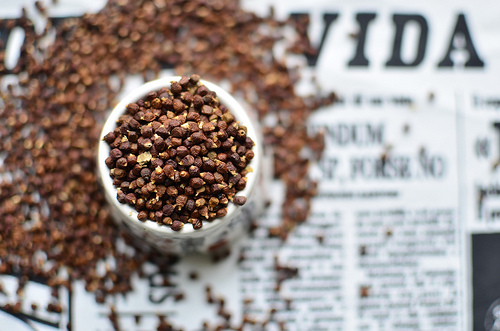
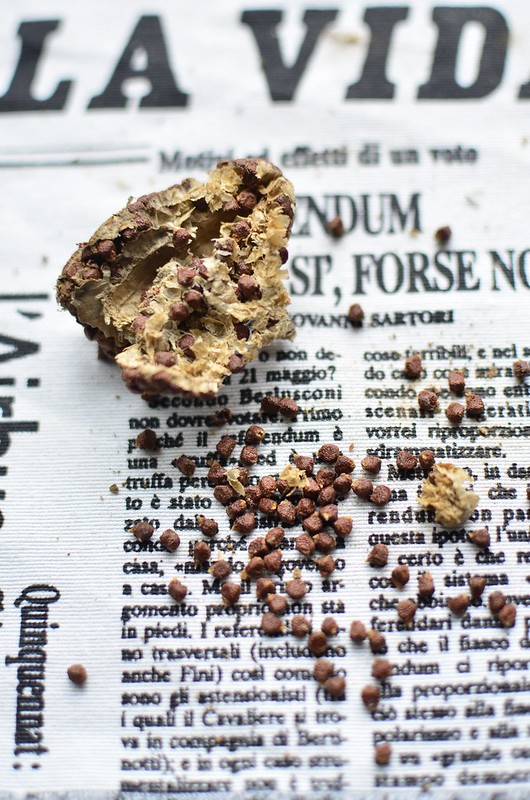
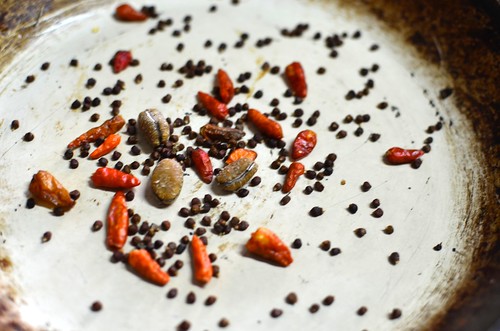
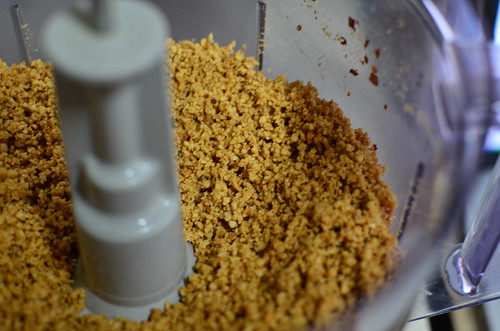
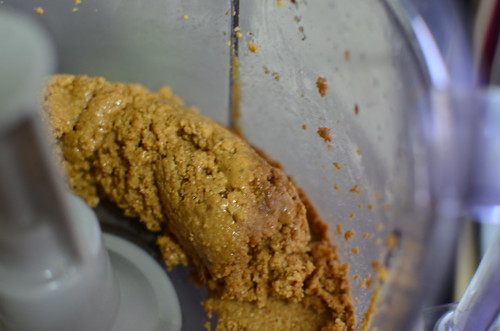
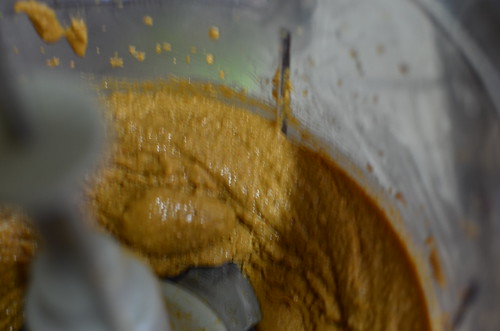
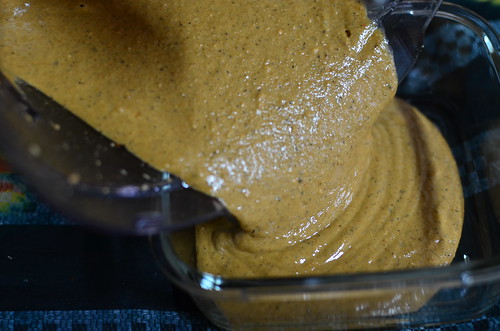
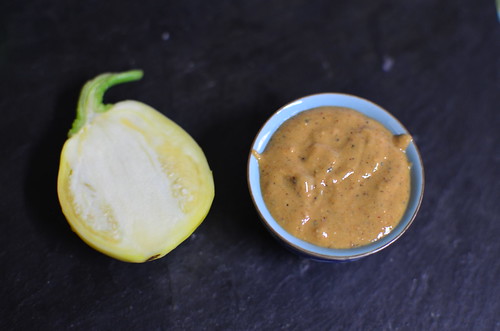
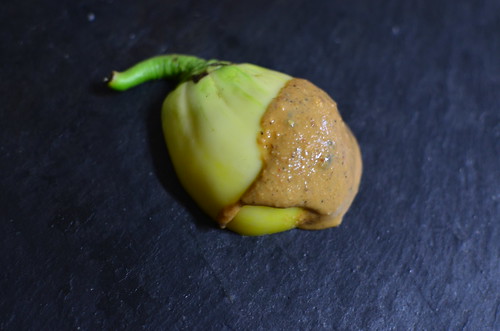
Leave a Reply